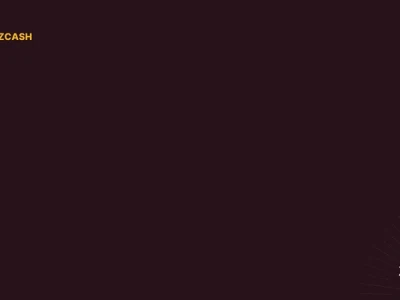Zcash's Privacy Play: Is It More Than Just Bitcoin's Shadow?
Zcash (ZEC) is making waves, surging back into the crypto top 20 and hitting levels not seen since 2018. We're talking about a 1,270% year-over-year gain, pushing its market cap to just shy of $10 billion. The question is: is this a flash in the pan, or is there something fundamentally different happening here?
The narrative being pushed is that Zcash is the "encrypted Bitcoin," a return to cypherpunk ideals amid growing concerns about on-chain surveillance. Galaxy Digital's Will Owens makes this case, pointing to Zcash's privacy features—specifically, its shielded transactions using zero-knowledge proofs—as a key differentiator. He argues that as Bitcoin becomes increasingly intertwined with traditional finance (think ETFs), its original promise of decentralized, anonymous cash is being eroded. Zcash Surging on 'Cypherpunk Principles' as Bitcoin Alternative: Galaxy Digital
Daily trading volume has jumped to $1.8 billion, with liquidity deepening across major venues like Binance and Bybit. Futures markets are also lifting, with Binance leading open interest at roughly $340 million. That's a lot of speculation, but the spot-to-futures ratio remains high, with about $801 million in 24-hour spot volume versus $4.5 billion in futures turnover. This suggests that organic demand, rather than pure leverage, is driving this cycle’s movement.
The Privacy Pivot
The renewed interest in Zcash coincides with increased regulatory scrutiny of Bitcoin privacy tools. The U.S. government's crackdown on services like Samourai Wallet and Wasabi Wallet, which offer CoinJoin functionality (a method to obscure Bitcoin transactions), has undoubtedly pushed some users towards privacy-focused alternatives.
Owens notes that 30% of Zcash supply has become shielded. "The larger the shielded pool, the harder it is to trace flows,” he writes. A bigger anonymity set equals stronger privacy. But here's where I get skeptical. Are 30% of ZEC holders actively using shielded transactions, or is that number inflated by dormant coins sitting in shielded addresses?

I've looked at hundreds of these crypto reports, and the metrics around "active" usage are always the fuzziest. How do we know those shielded coins aren't just sitting there, doing nothing? What's the velocity of shielded ZEC compared to unshielded ZEC? These are questions that need to be answered before we can definitively say that Zcash's privacy features are truly being utilized at scale.
The Bitcoin Dichotomy
The core of the Zcash argument rests on the idea that Bitcoin is losing its privacy. But is that entirely accurate? While it's true that Bitcoin transactions are transparent, various tools and techniques can still enhance privacy. CoinJoin is one, though it's facing regulatory headwinds. Layer-2 solutions like Lightning Network also offer increased privacy. The claim that Bitcoin is becoming entirely transparent due to ETFs is an oversimplification. (ETFs, after all, primarily affect institutional investment flows, not the fundamental privacy of individual transactions).
Furthermore, the argument that Zcash is a "spiritual successor" to Bitcoin ignores a key difference: adoption. Bitcoin's network effect is massive, dwarfing Zcash's. While Zcash's market cap is significant (around $10 billion), it's still a fraction of Bitcoin's $2 trillion. Can Zcash truly compete with Bitcoin as a decentralized, censorship-resistant currency when its network is so much smaller?
Reality Check: Privacy Isn't Free
Zcash's price has increased nearly tenfold in two months, from $40 to $396—to be more exact, closer to $400. That's a meteoric rise, fueled by the narrative of "encrypted Bitcoin" and regulatory pressure on Bitcoin privacy tools. But narratives can be fleeting. The fundamental question remains: is Zcash's privacy worth the trade-offs in adoption and network effect?
The data suggests that while there is a genuine increase in interest in privacy-focused cryptocurrencies, the extent to which Zcash is truly being used for private transactions remains unclear. The 30% shielded supply figure is a start, but we need more granular data on transaction velocity and active usage to get a clearer picture. Until then, Zcash's surge should be viewed with cautious optimism, not unbridled enthusiasm.



